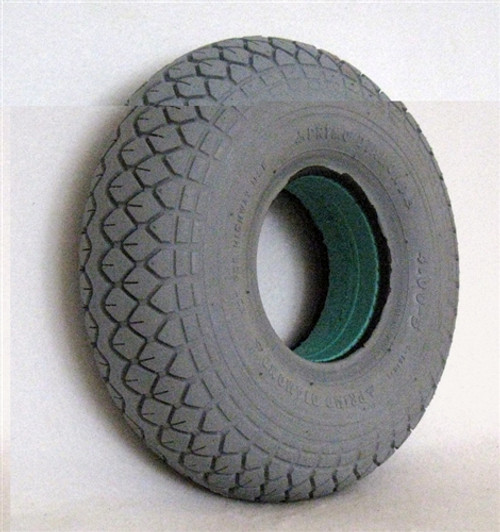Foam-filling skid steer tires is considered a safe option as doing so gives more durability, traction, and strength to the tires. To fill foam in the tires, you can either take the DIY approach or get a mechanic to do it for you.
The better option is to go to a mechanic. But if you want to do it yourself, pay attention to the tire and closely observe till the point foam starts to leak out from the valve stem portion.
What's In This Guide?
What Are Foam Filled Skid-steer Tires?
Foam-filled tires are a type of pneumatic tires that were introduced to replace air-filled tires. Because the air-filled tires run the risk of going flat due to a wide gamut of reasons, the foam-filled tires do not go flat. They also provide the same benefits as air tires in terms of traction, performance, and mileage without the part where the tires can get punctured.
Because the air-filled tires run the risk of going flat due to a wide gamut of reasons, the foam-filled tires do not go flat. They also provide the same benefits as air tires in terms of traction, performance, and mileage without the part where the tires can get punctured.
Plus, the foam fill tires will also not lose air pressure. We use foam filled tires on skid steers due to their ability to perform well even in harsh conditions. Skid steers will majorly run on rough roads filled with pebbles, rocks, dirt, etc.
So, we prevent changing and repairing any damage caused to the tires due to such terrains using foam fill tires. In addition to these benefits, the foam-filled tires are better at maneuvering, and they bring efficiency into the operations, especially in the kind of work done by the skid steers.
Foam-filled tires give more stability to the skid steer, which is good. But some might argue that they also provide the extra weight, which can lead to mileage issues. Additional vehicle stability offers better control in rough terrains, which is difficult to obtain with air-filled tires. Hence foam-filled tires provide better footing to the vehicle.
Additional vehicle stability offers better control in rough terrains, which is difficult to obtain with air-filled tires. Hence foam-filled tires provide better footing to the vehicle.
However, the same extra weight on the tires reduces their lifespan relative to the air-filled skid steer tires. Added to this, if the vehicle is working in rough terrains continuously for a longer period with foam fill tires, the speed of tires losing their grooves and tread increases.
To sum it up, foam fill tires bring extra stability that contributes to the driver’s safety, reducing the tire’s lifespan.
Polyurethane is used to create the foam that takes up space inside the tires. Thus, giving the tire puncture resistance plus more stability along with the weight. Due to the usage of polyurethane, foam fill is also called polyfill.
The weight of foam-filled tires depends on the volume of foam added to the tire, which further depends on the size of the skid steer tire. Two of the most common skid steer tires have the following dimensions;
Two of the most common skid steer tires have the following dimensions;
Based on these dimensions, the weight of one foam-filled 10×16.5 tire will be 130 pounds. So for four tires, the total weight added to the skid steer is 520 pounds, just for the tires. The same for a 12×16.5 tire will be 205 lbs, and for four tires, the total volume of foam required will be 820 lbs. This is what gives extra stability to the vehicle and makes it a better choice for rough terrains.
The short answer would be no. For one, the skid steer tires are nothing like car tires. These are the big boys we are talking about, and handling them is easier said than. We understand that taking the skid steer to the mechanic is also a task, but going to the mechanic is the safer route.
Foam is not bad for tires per se. Yes, it makes the tires heavier, and it won’t bulge or bend under pressure.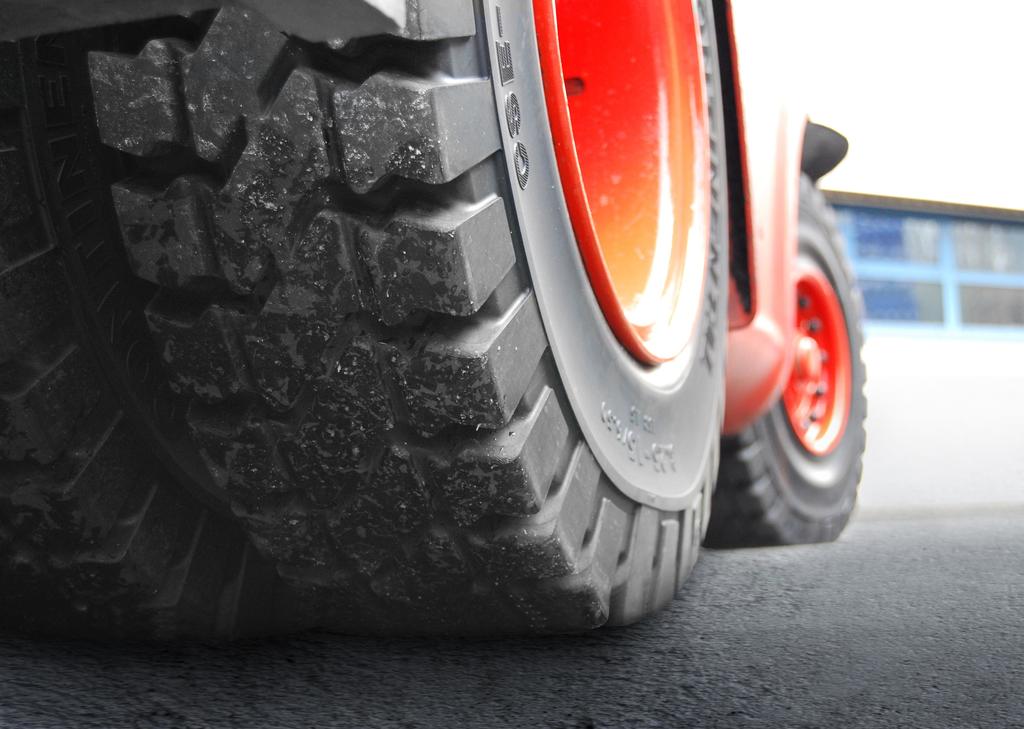 In some situations, this can cause some trouble with driving due to gripping issues.
In some situations, this can cause some trouble with driving due to gripping issues.
The only downside to filling foam in the tires is that they are practically junk after they wear out. You cannot use them in other places, at least not easily. Plus, the tires will be heavier than other bald tires, which may be used in other places.
But performance-wise, foam is not bad for tires. If anything, it improves the tire’s life span as there won’t be any puncture issues.
Yes, the process is safe. As long as you are following the proper process, things will go smoothly. However, the problem may arise after replacing the tire on the vehicle because we have heard cases when tires went flat right after bringing the vehicle down.
It depends on the tire and the cost of the container, and its capacity. As discussed above, one 10×16.5 tire requires 130 lbs, and one 12×16. 5 tire requires 205 lbs of foam. Depending on the volume required (approximately 24.5 gallons for one 12×16.5 tire), you can calculate the cost.
5 tire requires 205 lbs of foam. Depending on the volume required (approximately 24.5 gallons for one 12×16.5 tire), you can calculate the cost.
Yes, the US FMCSA regulations Section 393.75 mandates that the tire can be filled with materials other than air including silicone and polyurethane.
April 11, 2021
When on the job, one of your biggest concerns is avoiding flat tires on your machine. You want tire solutions that can’t go flat even when faced with threatening debris. Therefore, you have two main tire options: (1) foam-filled tires and (2) solid pneumatic tires. While both will prevent flats, there are notable differences between them.
Foam-filled tires are OTR pneumatic tires (Bias Air Tires) filled with a type of liquid that hardens inside the air tires and converts the air tires to solid tires. This technology has existed since before the invention of solid tires. For a while, it was the primary way to get a “puncture-proof” tire.
This technology has existed since before the invention of solid tires. For a while, it was the primary way to get a “puncture-proof” tire.
The primary benefits of a foam-filled tire are:
Some of the major disadvantages of a foam-filled tire are:

Solid tires are considered a newer technology when compared to foam-filled tires.
Some of the major advantages of a solid tire are:
Some of the drawbacks of solid tires are:
View our Solid Tire Catalog
Download 2021 Master Catalog PDF
View 2021 Master Catalog PDF
Related Sentry News
Australian and Chinese chemists have learned make durable concrete from recycled materials. They used solid filler, regenerated from concrete waste, added particles recycled car tires and applied new way molding concrete. It turned out concrete, which strength is even slightly superior traditional. results studies published in Resources magazine, Conservation & Recycling.
They used solid filler, regenerated from concrete waste, added particles recycled car tires and applied new way molding concrete. It turned out concrete, which strength is even slightly superior traditional. results studies published in Resources magazine, Conservation & Recycling.
Concrete — composite building material, consisting of a water-cement mixture, sand and various solid fillers - crushed stone or rubble. Produced annually more than three billion tons of concrete, simultaneously with this the number of solid waste on his basis, which are formed during the demolition of old buildings. Last thing time scientists and engineers are trying to regenerate filler from such waste and reuse it for production new concrete. it can help at the same time. reduce waste and make material is cheaper. However, so far so eco-friendly concrete less durable how ordinary - in average for 40 percent.
Australian and Chinese chemists under leadership of Yu Fairy Wu (Yu Fei wu) from Shenzhen University found way to make regenerated concrete more durable.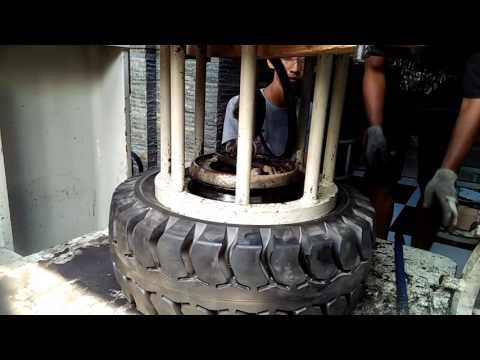 They are first applied a new method of concrete molding under pressure, a to improve strength and material elasticity, part solid additives were replaced by particles used automobile tires.
They are first applied a new method of concrete molding under pressure, a to improve strength and material elasticity, part solid additives were replaced by particles used automobile tires.
B searching for the perfect line-up prepared concrete with standard hard filler with solid filler from reclaimed concrete, without particle additives tires and with different numbers of particles tires. Part regenerated additives treated with lime or acetic acid. Both procedures help reduce particle porosity filler, although they work differently. Acetic acid dissolves calcium silicates and hydroxides, of which it consists upper porous layer of particles, a lime penetrates inside the pores and fills them. So way the authors hoped increase strength of concrete. All others concrete components were standard - tap water, sand and Portland cement. Total got ten various compositions, for each composition was made according to two sample - with traditional molding and molding under pressure. In second case fresh concrete mortar placed into a steel form and compressed with the help hydraulic press during the day, after which they left on 28 days at humidity 95 percent and temperature 20 degrees Celsius.
Samples with regenerated filler expected turned out to be less durable: and compressive strength and modulus elasticity they were lower than standard concrete. However, the addition of tire particles and molding under pressure influenced the strength well: for example sample of reclaimed concrete 20 percent tire additives demonstrated compressive strength of 36.24 megapascals and modulus of elasticity of 29.94 gigapascals - both parameters were slightly higher than that of control sample. AT at the same time, a decrease in the porosity of the filler with acetic acid and lime despite almost did not improve strength concrete. Therefore, the authors concluded that in further it is possible will do without these procedures, concentrating only on the addition of tire particles and press molding.
Wu and his colleagues especially note that for production ecological concrete on their technologies not need to build new enterprises - enough will make small changes on existing production lines.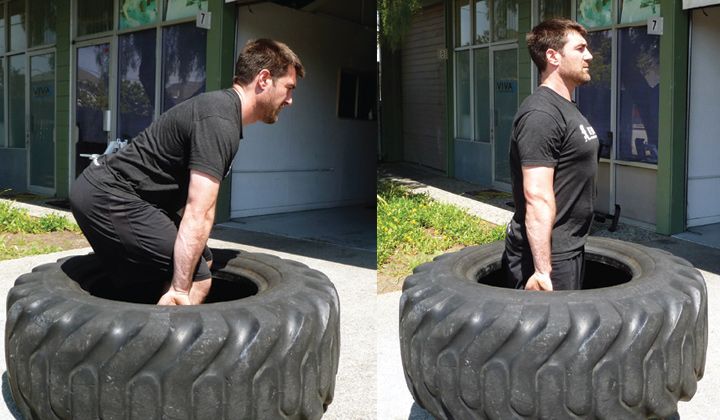
Development materials based on various types of recyclables scientists and engineers are now engaged in around the world. Mostly similar materials use in construction, but sometimes they are application and in more high-tech areas. For example, chemists used plastic bottles to make anodes for metal-ion batteries, bricks turned into capacitors.
A in our material "Blood and concrete" can read about stories composite building materials based blood.
Natalia Samoilova
Found a typo? Select the fragment and press Ctrl+Enter.
AvtolikbezDecember 15, 2019
Contents
The driver, who independently maintains the power unit of the machine, needs to have an idea of \u200b\u200bthe operation of the thermostat in the car. A distribution element installed in the engine compartment ensures the distribution of antifreeze flows and maintains the degree of engine heating. When the valve is jammed, the engine operates in emergency mode, which leads to breakdowns or increased fuel consumption.
A distribution element installed in the engine compartment ensures the distribution of antifreeze flows and maintains the degree of engine heating. When the valve is jammed, the engine operates in emergency mode, which leads to breakdowns or increased fuel consumption.
The liquid cooling system (or air conditioning) consists of a jacket located in the cylinder block and block head, a pump, a radiator and connecting pipes. Part of the fluid is fed into a separate heat exchanger for interior heating. The intensity of air heating is regulated by a tap (for example, on classic VAZ cars) or a separate damper in the air duct.
The thermostat is designed to distribute refrigerant flows between the jacket and the radiator, to ensure the operating temperature of the engine and warm up the passenger compartment.
Several types of thermostats are used in vehicle power plants:

After starting the power unit, part of the heat generated during the combustion of the fuel goes to heat the crankcase and block head. To ensure normal lubrication and improve mixture formation, the engine must warm up to 85-105 ° C (depending on the ICE model). The thermostat installed in the cooling circuit does not allow the refrigerant to circulate through the radiator. Antifreeze walks in an inner circle, allowing the engine to warm up to operating temperature in 5-10 minutes.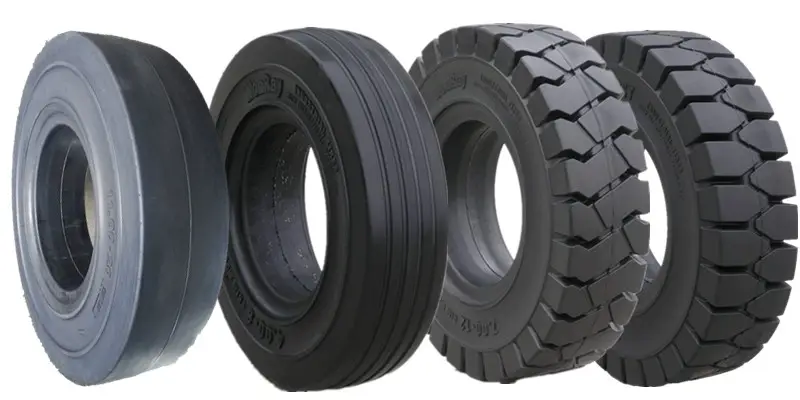 As it warms up, the thermostat passes the refrigerant into the heat exchanger of the machine, which is cooled by the fan.
As it warms up, the thermostat passes the refrigerant into the heat exchanger of the machine, which is cooled by the fan.
The principle of operation of the regulator is based on the thermal expansion of a liquid or solid filler.
The expanding material displaces the valve stem that distributes the antifreeze flows. The circuit provides springs that return the dampers to their original position when the temperature of the liquid decreases. The structural elements are fixed in a housing made of silumin or heat-resistant plastic. On some vehicles, thermostats are mounted without an outer shell, installed in the engine block of the power plant.
Solid state regulators have a sealed chamber filled with synthetic wax (ceresin). The principle of operation is based on the transition of wax during heating from a solid phase to a liquid one. The solution acts on the elastic cuff and the pusher associated with it. The moving rod is connected to a poppet valve that allows the antifreeze to circulate in a small (or inner) circle or to pass liquid into the heat exchanger for cooling.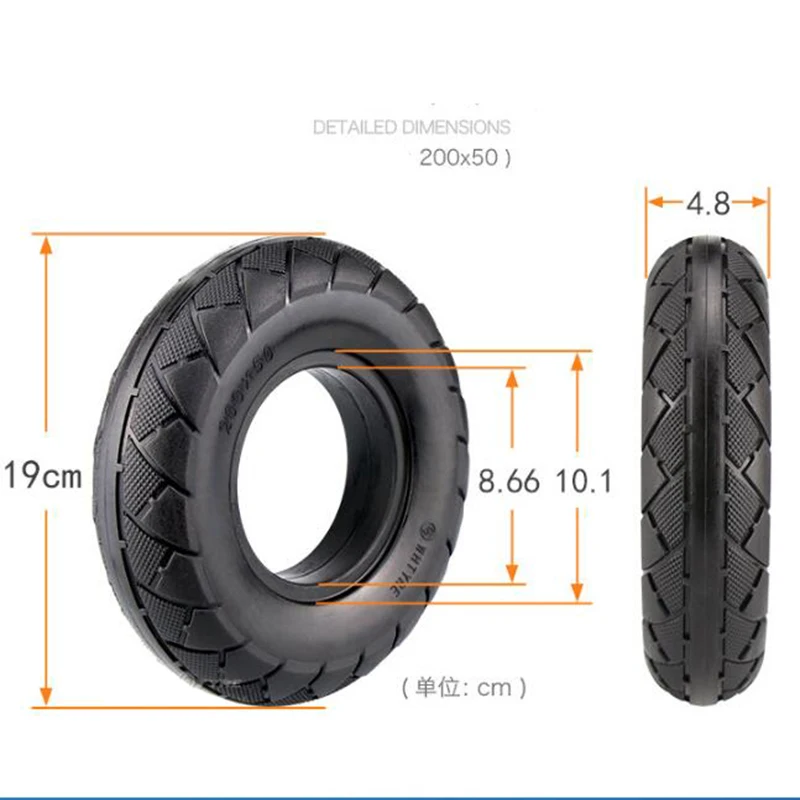
To increase the sensitivity to changes in the degree of heating, additives based on metal powder are added to the wax.
The resulting material is characterized by a stable expansion coefficient during the transition from the solid phase to the liquid phase and vice versa. By stabilizing the parameter, the temperature of the refrigerant is maintained within an acceptable range.
The liquid media regulator is similar to the solid fill design, but the fluid is contained in a sealed bellows. The liquid consists of a mixture of distilled water and ethyl alcohol. With thermal expansion, overpressure develops in the bellows. The element straightens and through the rod connected to it opens the antifreeze outlet channel into the heat exchanger reservoir. The amount of fluid pumped into the radiator depends on the temperature of the antifreeze in the cylinder block.
The regulator is located in the engine compartment of the car - on the crankcase of the power unit or at the inlet to the coolant circulation pump. In engines with multiport fuel injection, additional regulators are installed to maintain the temperature of the head of the cylinder block in a given interval. The element is installed on the back of the power unit. It is possible to install additional elements for accelerated heating of the car interior.
Regulator failure symptoms:

Regulator failure is caused by valve stem sticking in the open or closed position. With a large circle open, fluid is supplied to the radiator, increasing the warm-up time. The malfunction becomes evident when the car is operated in winter. For example, a diesel engine at an air temperature of -10 ° C cannot be warmed up to 40 ° C even after a run of 40-50 km.
Rod jamming occurs due to the negative effect of antifreeze on metal structural elements. Car manufacturers recommend changing the coolant periodically. When using old antifreeze, deposits appear on the surface of the rod, limiting the mobility of the part. An additional cause of the defect is filling the cooling system with tap water (for example, if antifreeze leaks). Salts dissolved in the liquid cause corrosion of the steel rod.
Increasing the degree of engine heat adversely affects the performance of engine oil. When the engine overheats, the piston group jams. Seizures appear on the surfaces of the cylinder mirrors and the bearings of the crankshaft and camshaft. Damage can only be eliminated during a major overhaul of the motor.
Damage can only be eliminated during a major overhaul of the motor.
An additional malfunction of the thermostat is cracks in the housing through which antifreeze escapes. Damaged parts must be replaced: soldering or sealing gaps is not possible.
Primary thermostat diagnosis is carried out on the vehicle. After starting the engine, the temperature of the pipes leading to the radiator is checked (by hand or by a sensor mounted on a digital multimeter). After warming up the engine, it is necessary to check the degree of heating of the sleeves going to the radiator. With a working thermostat, the hoses should heat up evenly. The technique allows you to determine the jamming of the stem and valve disc. The absence of cracks in the body parts of the regulator is also checked.
Additional testing involves removing the regulator from the machine. Antifreeze is drained from the cooling system, rubber pipes are held on the thermostat housing with screw or spring clamps (depending on the car manufacturer).